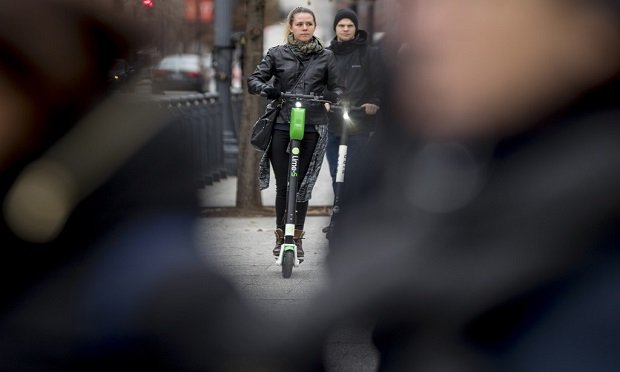 In this Dec. 4, 2018, photo a couple rides scooters near the White House in Washington. Electric scooters are overtaking station-based bicycles as the most popular form of shared transportation outside transit and cars. (AP Photo/Andrew Harnik)
In this Dec. 4, 2018, photo a couple rides scooters near the White House in Washington. Electric scooters are overtaking station-based bicycles as the most popular form of shared transportation outside transit and cars. (AP Photo/Andrew Harnik)
If you've spent any time in a major metropolitan area lately, you've probably noticed the streets and sidewalks are riddled with electric scooters.
Recommended For You
Want to continue reading?
Become a Free PropertyCasualty360 Digital Reader
Your access to unlimited PropertyCasualty360 content isn’t changing.
Once you are an ALM digital member, you’ll receive:
- Breaking insurance news and analysis, on-site and via our newsletters and custom alerts
- Weekly Insurance Speak podcast featuring exclusive interviews with industry leaders
- Educational webcasts, white papers, and ebooks from industry thought leaders
- Critical converage of the employee benefits and financial advisory markets on our other ALM sites, BenefitsPRO and ThinkAdvisor
Already have an account? Sign In Now
© 2025 ALM Global, LLC, All Rights Reserved. Request academic re-use from www.copyright.com. All other uses, submit a request to [email protected]. For more information visit Asset & Logo Licensing.








